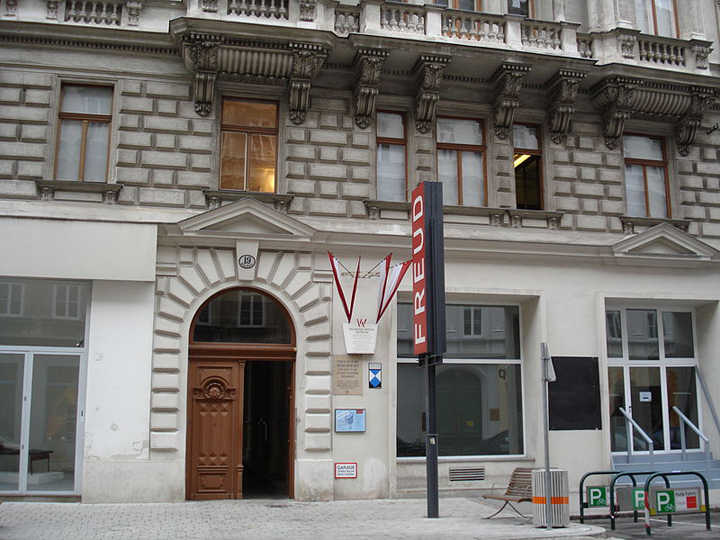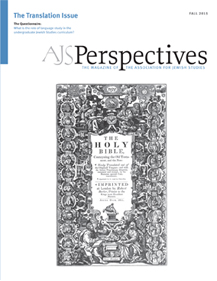
Bettelheim was not the first to charge that psychoanalysis had been lost in translation. In 1955, at a lecture in Vienna calling for "a return to Freud," Jacques Lacan spoke movingly of the echoing of "the Freudian message . . . across the world from the great bell of Vienna . . . on the waves set up by the tocsin of hate, the tumult of discord, the panic-stricken breath of war." The bearers of the Freudian message to the diaspora were compelled to abandon the European historical sensibility, the psychoanalytic commitment to bridging "modern man to the ancient myths," because of a desire to assimilate to another culture. Freud's exile from Vienna forced the exile of his thought from history itself, to the flatter horizons of the social sciences. In the Standard Edition the world only mistakenly imagines itself in possession of a primary document of Freudian thought. As Sander Gilman writes, "After decades of reading Freud in English, Freud has become 'Englished' in our sensibility, just as the 'real' Bible is the King James translation."
Such laments over the distortions that accompanied the Freudian diaspora are the requisite preludes to the lamenters' recovery projects: Bettelheim aims to recover a humanist Freud of cultured European philosophical thought, accessible to an educated layperson. By contrast, Lacan insists that Freud's contribution was precisely to decenter what he calls "a whole humanist tradition." Jewish Studies critics like Gilman seek to return Freud to the Jewish fin de siècle. Such recovery projects very nearly define the study of Freud in the humanities, in their insistence on the Ur-text behind the translation, the narrative Greek behind the scientific Latin, the philosopher behind the scientist, the Viennese Jew behind the Dead White European Male, the "Yid" behind the id.
There are religious echoes in all these endeavors: Psychoanalysis followed a trajectory from a small Jewish movement to one open to non-Jews, eventually becoming an international movement with universal claims; this drama was enacted within a world-shaking cataclysm from which the psychoanalytic good news was rescued, despite the destruction of the Jewish centers from which it emerged. The message, though, was dependent on the necessarily imperfect medium of translation; the anxieties of translation were initially relieved by the canonization of a "standard" translation; nevertheless, this translation was soon subjected to accusations of inaccuracy. Our own era has seen the inevitable attempts at recovering an Ur-text that could provide access to the founder's own words. Many others have pointed out that Freud was the founder of a religion; my point is that he was also the founder of a religion-in-translation.
The dream of a Freud still undisturbed by translation might be subjected to psychoanalytic interpretation or—better— to psychoanalytic translation theory. Such a theory would recognize Freud's peculiar fondness for translation metaphors, his use of the terms Übersetzung and Übertragung to describe dreams, symptoms, phobias, slips of the tongue, fetishes, the choice of suicidal means, transference (Übersetzungsliebe!), and psychoanalysis itself. Translation is everywhere in psychoanalysis, the very connective tissue linking its more famous components. Freud mobilized, however, not the primary but rather the secondary meaning of the term as transposition, displacement: only the difference between forbidden thought and symptom, dream, or joke allows the thought to evade psychic censorship. Such a view of translation is characteristic of the rabbinic translation narrative, which imagines the Bible in Greek not as a perfect equivalent to the Hebrew but as shaped by the pressures of imperial censorship.
The problem of translation and censorship rises to the surface in one joke Freud analyzed:
The doctor, who has been asked to look after the baroness at her confinement, pronounced that the moment had not come, and suggested to the baron that in the meantime they should have a game of cards in the next room. After a while a cry of pain from the baroness struck the ears of the two men: "Ah, mon dieu, que je souffre!" Her husband sprang up, but the doctor signaled to him to sit down: "It's nothing. Let's go on with the game!" A little later there were again sounds from the pregnant woman: "Mein Gott, mein Gott, what terrible pains!" "Aren't you going in, Doctor?" asked the baron. "No, no. It's not time yet." At last there came from next door an unmistakable cry of "Aa—ee, aa-ee, aa-ee!" The doctor threw down his cards and exclaimed: "Now it's time."
In many versions of this joke, the baroness calls out "Oy vey iz mir." What Freud describes as the breakthrough of the repressed "primitive nature" of the woman under the pressure of labor is, in more openly Jewish versions, the breakthrough of the repressed Yiddish from its "genteel" linguistic concealment. Jokes in which a repressed Jewishness breaks through a "civilized" façade are indeed recognizable joke types expressing the anxieties of acculturation.
Freud's concealment of the Yiddish in this joke reminds us that the question of translation-as-assimilation does not begin with Freud's exile from occupied Vienna, but rather with his father's migration from Galicia to Vienna. It is this earlier migration that figures in the peculiarly Jewish psychopathologies that are the subject of psychoanalysis, and suggests that Freud's writings are already lost to us in translation, in Vienna as in New York.
The laboring woman is thus a Jewish self-translator, who translates from falsity to truth, from the façade of a Gentile tongue to the marrow of primary speech. Such a trajectory deviates from traditional notions of translation, which assume that what comes first is closest to being true, and that what comes later is increasingly faded, secondary and false. If the baroness complicates the usual trajectory of translation, so does psychoanalysis, which also assumes that what presents itself first to view—a symptom, joke, dream—is both a falsifying evasion of a truer latent content and destined to undergo further falsifications in its retelling and interpretation.
If this joke is an allegory for psychoanalysis in translation, then what do these figures represent? If the baroness is a displacement for Freud, he is also the husband who holds back, playing his Jewish cards close to the chest. Freud may also be the doctor, whose clinical skills plumb not the body but rather the shifting ratios between language and truth, the pace of contractions translated into the ladder of European languages. Freud famously described every dream as having a "navel" that resisted interpretation. This joke lets us glimpse not a navel but a door closed against a birth, which we are invited to imagine but forbidden from seeing. The woman's cry is only language, translating pain, subject to interpretation. Even reduced to her "essence," this pretentious, laughable, suffering woman remains intact and unknowable, a screen for the social anxieties she embodies and displaces.
The recovery of a not-yet-translated Freud aims not only to discover an original Freud but also to strip away the veils that have kept him from us. But this desire to undo translation, to recover a pristine meaning untouched by assimilation, is itself a form of aggression, as Freud the joke teller / gynecologist gives us the tools to see. We are in an era of retranslation, but what coming "closer" to Freud's native tongue might look like remains unclear: What is Freud's "original" text—what he wrote in German or what he concealed in it?
In Moses and Monotheism, Freud suggests that Moses's "speech defect" may have been a function of his Egyptian origins, and that the leader of the Israelites was also a non-native speaker of Hebrew. If so, the Hebrew Bible is another text, like the New Testament, that fails to provide us with the ipsissima verba of its founding figure. Like the Bible, psychoanalysis may already be a translation, in which the words we seek were gone before they could be spoken. We may follow the pressures that shaped this translation, but we cannot expect to hope to fix a sacred text immune from the pressures of translation, which is to say, from the closed door, the split self, our own pain expressed in the cries of the other.

